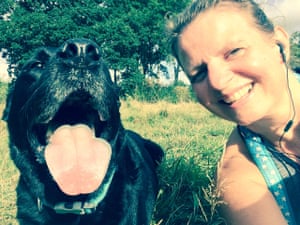The government’s commitment to provide an additional £2bn for social care in the spring budget was presented as a solution to help ease pressure on the NHS and councils over the next three years. While the measure has addressed the immediate funding crisis, there is concern that this is no more than a short-term fix. The announcement risks masking the true scale of the challenges ahead and the radical surgery required to reform social care.
In all likelihood, the extra money will be used by local authority and NHS commissioners to block purchase places in residential care homes. This is not the answer.
Spending money in this way will do little to tackle the fundamental problem: we are admitting too many older people to hospital, keeping them there for too long and failing to give them the care they need in their own homes.
While cheaper than a hospital bed, a place in a residential care home is still more expensive and, crucially, less effective than care and support in the community.
There needs to be a transformation in the way that social care is commissioned and provided, to improve the quality of care, but also to make services financially sustainable, without the need to raid other budgets for extra funding.
A strategy for reform would have seven key elements:
1. Champion independent living
We need to engineer a dramatic shift away from residential care towards the kind of support elderly people actually want and need. That means better support for people to live independently in their own homes, with a skilled, professional workforce to provide the advice and assistance they need. We need to invest in a model of care that involves greater collaboration between the person being supported and those providing support.
2. Support families and carers
There needs to be stronger provision of advice and assistance for families and other carers, and more effective liaison with voluntary and community organisations that are skilled in providing support to older people. This means creating partnerships that can empower volunteers and deliver more professionalised community care.
3. Shift the funding focus to community-based care
Local authorities need to switch their focus away from expensive residential provision to support family, carer and community-based services. This funding shift is necessary if we are to create a fundamentally new system that offers holistic care in the home and keeps older people, wherever possible, out of hospital and residential care.
4. Incentivise local authorities
Local authorities should be incentivised to purchase individually tailored packages of care. Why are we so afraid of asking people, and their relatives and carers, what they really want and need? Many councils want to do this, but their options are limited by what the market can provide or by a lack of imagination. They should be rewarded when they invest in transforming the way providers think about services.
5. Prevention rather than cure
Transforming the social care system, rather than simply shoring it up, would address the problem of delayed discharges from hospital, but also reduce the flow of older people into hospital in the first place. It would prioritise prevention, rather than waiting for problems to arise and then attempting an inadequate cure. The best local authorities are already using their resources creatively, such as looking at predictive analytics to anticipate demand.
6. A better alternative to ‘integration’
There is plenty of talk about the need for an integrated health and social care system, or even a “National Care Service”. There is a much simpler solution. NHS providers and local government need to co-operate better to find the right kind of care for elderly people.
Liaison between hospitals and local authorities will never be truly effective if it is just one more item on the to-do list of hard-pressed nurses and social care workers. It requires dedicated resources – well qualified people whose full-time job it is to ensure that the hand-offs between hospital and community care are speedy, efficient and driven by the individual needs of the patient. Creating these vital liaison roles should be only the first step in a programme to transform the skills and role of the social care workforce.
7. Pool resources
Just as the NHS and local authorities should look to share resources, there is a key role to be played by combined authorities and other city and county partnerships. They should be encouraged to pool their money to fund the transformation of social care.
The budget has already seen one U-turn. It is not too late to redirect the £2bn and make a real difference to health and social care in the UK.
Katie Johnston is director at KPMG
Join the Social Care Network to read more pieces like this. Follow us on Twitter (@GdnSocialCare) and like us on Facebook to keep up with the latest social care news and views.
How we can start a social care revolution in seven easy steps | Katie Johnson





